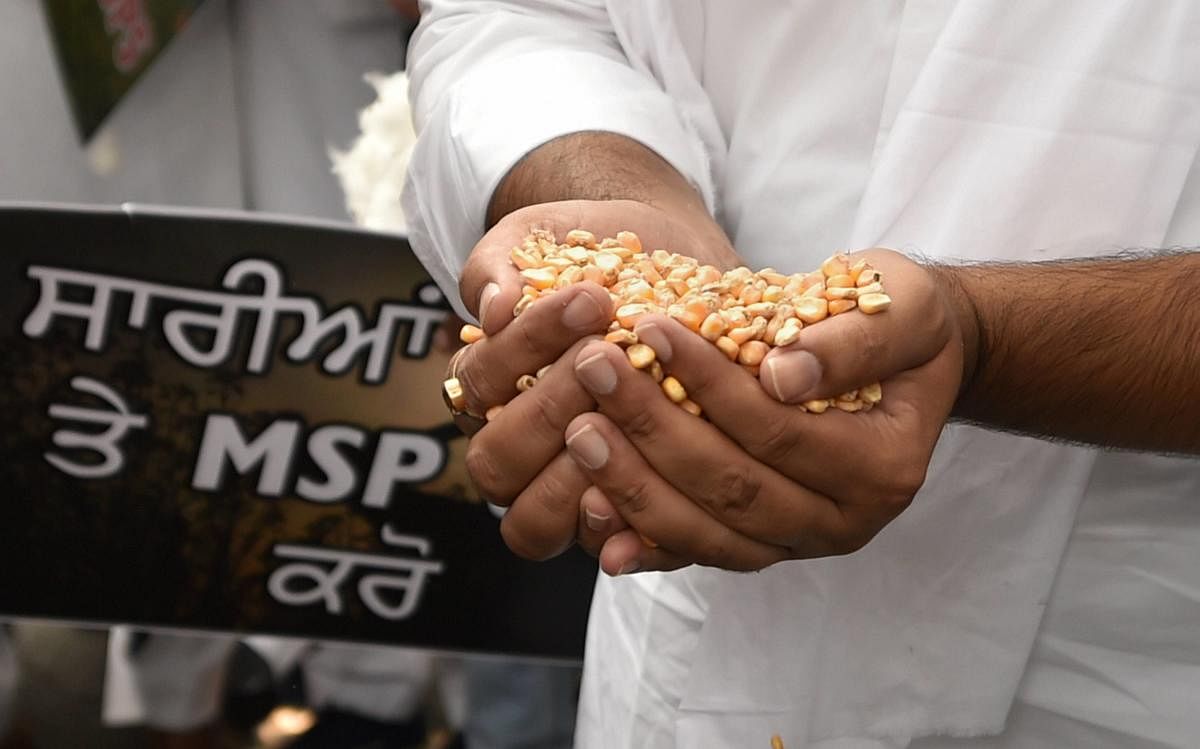
The Karnataka Agricultural Price Commission (KAPC), which has been urging the government to adopt the M S Swaminathan formula to calculate the minimum support price (MSP), says that even the watered-down version of the MSP adopted by the Centre grossly underestimates the cost borne by farmers.
The commission’s report for 2021-22 was finalised in February 2023 and released recently. Officials cited the general elections for the delay.
The current MSP formula, set by the Union government’s Commission for Agricultural Costs and Prices (CACP), fixes the price for a crop as 50 per cent more than the cultivation expenditure, land lease cost and family labour cost.
The KAPC’s calculations show that the Centre is underestimating the cost incurred by the farmers. “The expenditure incurred by farmers in the state is higher than the national average for almost all crops,” it said.
To demonstrate this, the KAPC gave its own calculation by using the Centre’s conservative formula, but without including the land lease cost or live cost. Even then, the cost of growing a quintal of ragi was Rs 3,935 whereas the CACP calculations brought it down to Rs 2,385.
If the land lease cost is included (as suggested by the Swaminathan report), the KAPC’s total cost for ragi would go up to Rs 5,286 whereas the CACP’s formula put the price at Rs 3,198.
The KAPC further said that the Centre takes into account the arrivals and prices in controlled markets (APMCs) to calculate the MSP. However, data shows that only about 15% of the 369 lakh tonnes food and horticulture crops was sold in APMCs. “It’s important to get the prices of the produce sold outside the controlled markets,” the report said, adding that the Centre missed the real picture in the absence of the price range of 85% of the crops.
The Centre’s underestimation led to its claim that the MSP provides 50% more than the cost of family labour and cost of cultivation. In reality, the MSP for paddy in rainfed area was 19% less than the cost of cultivation and family labour cost. Similarly, the MSP for jowar was -10%, hybrid jowar -16%, pearl millet -14%, urad dal -13% and tur -3%.
“Farmers growing ragi, jowar, pearl millet, tur dal, urad dal, groundnut, soya and sunflower have experienced losses. If the land lease amount is included, all farmers, except maize and chickpea growers, are suffering losses,” it said.
The report noted that input costs vary in different states depending on the climate, soil condition and irrigation facilities. As a result, there was a difference between the weighted average adopted by the Centre and the real cost calculated by the KAPC.
“There is a huge difference between farmers’ demand and the Centre’s MSP. Considering this issue is necessary in view of the prime minister’s ambitious announcement of doubling farmers’ income,” the report said.
Agro-economist T N Prakash Kammardi, who headed the KAPC earlier, said the state has the right to give bonus over and above the MSP fixed by the Centre to mitigate regional disparity. “It is well-known that one nation and one MSP doesn’t work as costs vary depending on several factors. Now is the right time for such an intervention considering the increased procurement for the Anna Bhagya scheme,” he said.
Kammardi also said that not just the MSP but the KAPC itself requires statutory support to ensure minimum powers to the commission. He said the report submitted by the KAPC needs to be validated as the commission did not have a competent technical person as the head.
“The KAPC has a big responsibility but requires powers to carry out its work,” he added.